I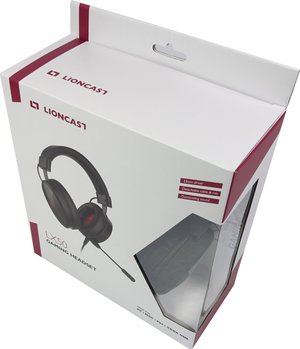 ntroduction and scope of delivery
ntroduction and scope of delivery
Lioncast is – at least for headsets – an absolutely blank sheet. Well – let's correct that's once in was.
Now that Lioncast has moved into financially calmer waters, it has expanded its own product portfolio in a targeted manner. With the LX50 we test the debut work, which was placed quite confidently in the class up to 60 Euros (if you leave out the usual game stuff with the EIA of almost 70 euros times).
Now it is not the case that OEMs are lying around on the Chinese beach for good headsets like sand, because many have now exclusive contracts in various areas – assuming certain quantities. And although lioncasts would have liked to have had Takstar, because you want a more neutral headset, you only waved off saturated.
Then again, you have only two options: either you leave it the same or look for an OEM who has enough experience and patience to listen. But the entry-level product shows a certain maturity from the beginning, which is quite astonishing. But enough with Spoiler & Co. – let's finally get to the test.
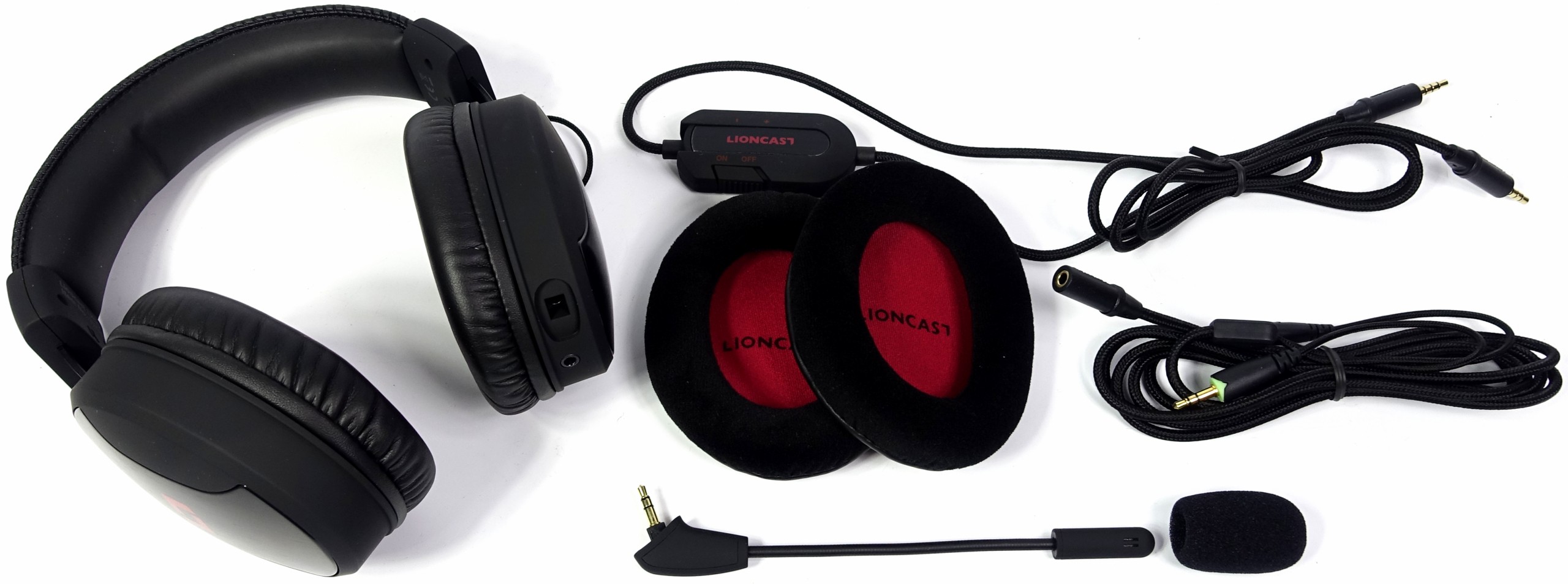
If you unpack the headset, you will find a pluggable microphone with gooseneck and detachable pop protection in addition to the actual headset, as well as an extension with the necessary splitter from three-channel multifunction jack (mobile devices) to two separate 3.5mm plug for the PC (micro, headphones).
As a small goodie, you get two sofa cushion soft replacement pads for those who like it tuffig instead of leathery. Sufficient and is reasonable to the price.
Optics and haptics
Raven-black rubber coating meets aluminium application (black lacquered) and other metal (steel bracket, also painted black). For dessert, there's black PU leather imitation, orange earcup curtains and textile-coated cables in this 60-euro menu.
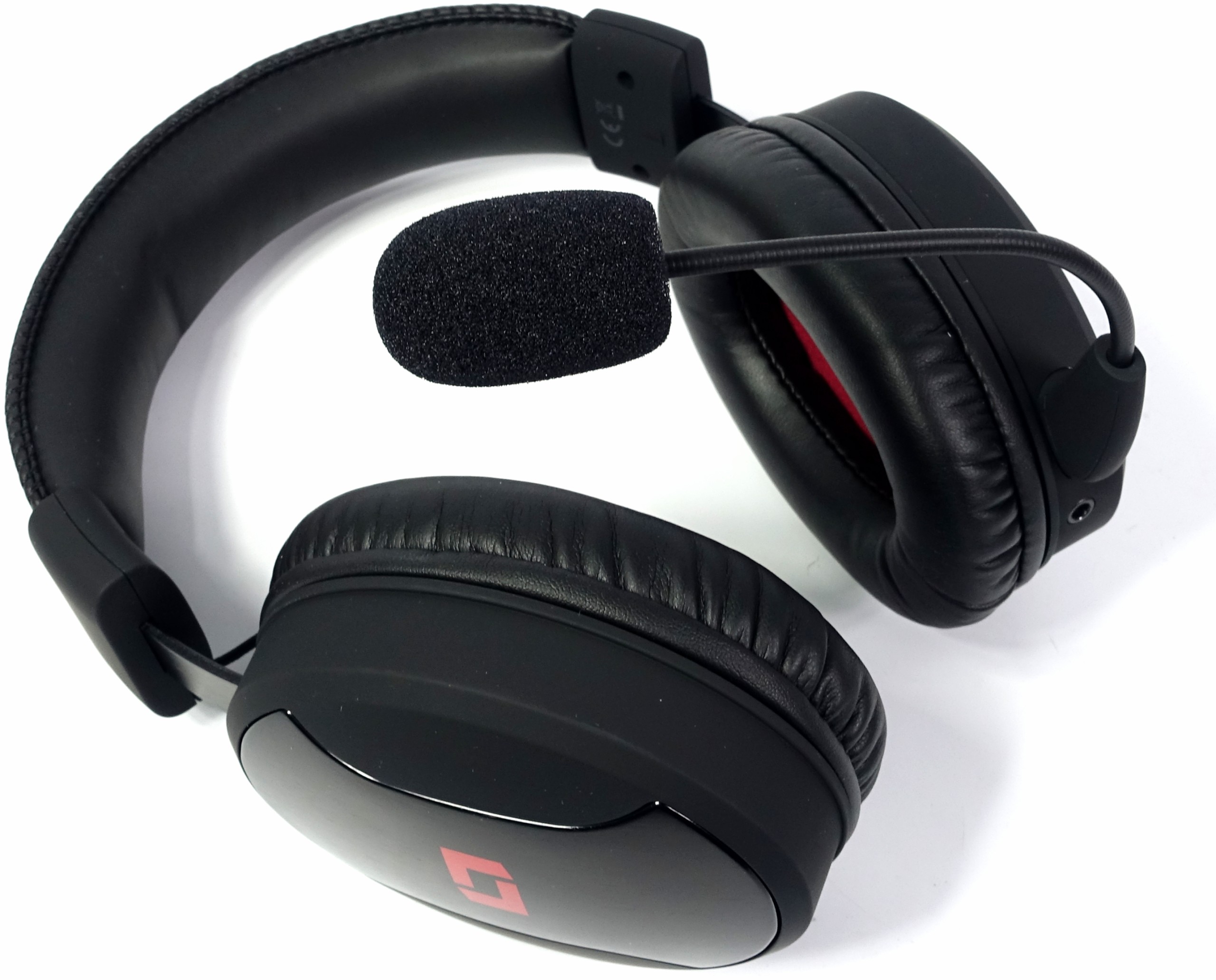
You can accept that, because you really can't expect more at this price – usually you get much less. At the very least, you can attest to the LX50's balanced appearance, which has been comfortably overstated with little gaming kitsch, so that without a microphone it could also pass smoothly as a pure headphones. Thank you for that, the eyes are happy.
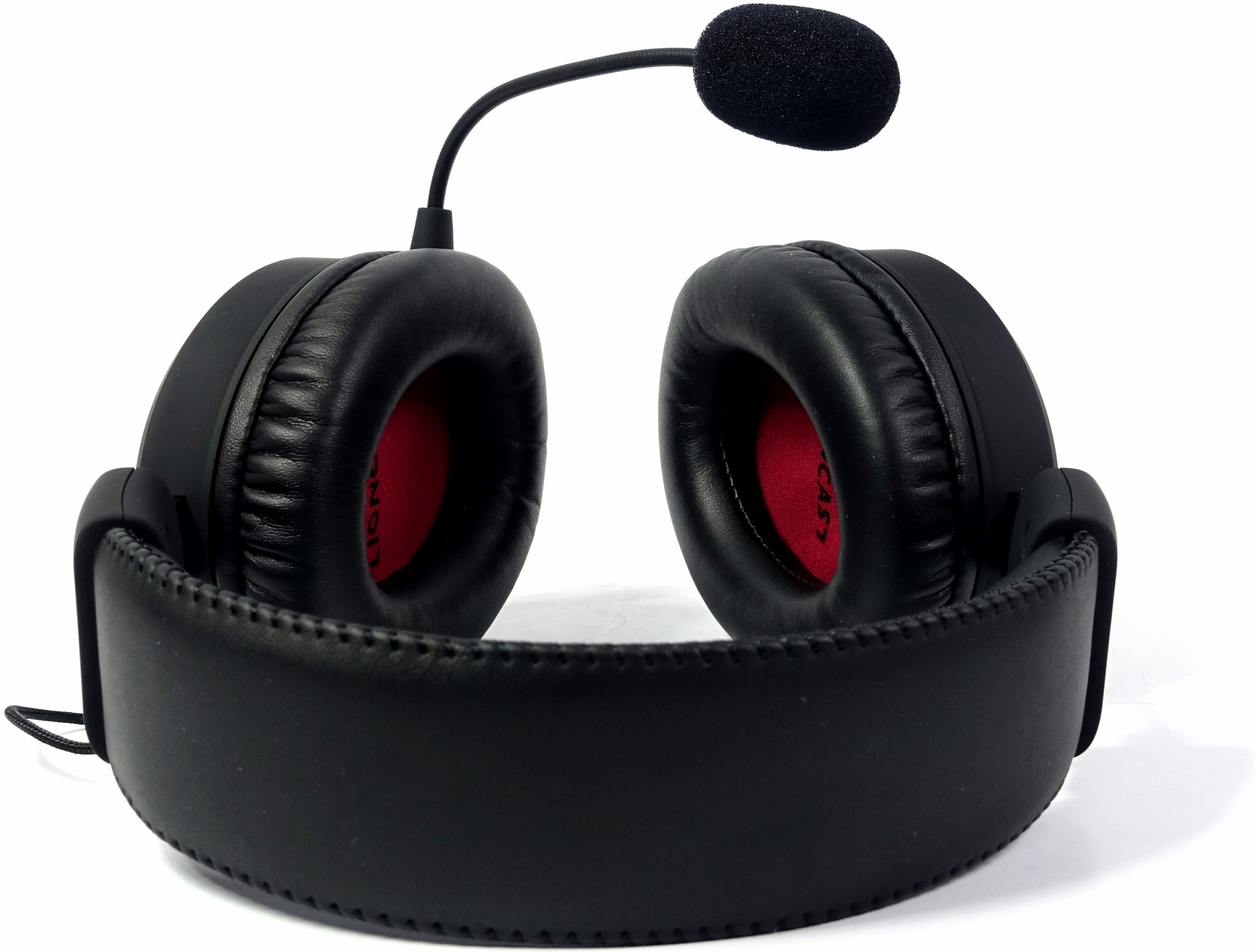
Comfort
The headset is quite comfortable and also sits quite neatly, even if the Asian production assistants like to forget that there are also hat sizes beyond the 60.
Although the handle in the headband is long enough to overcome this hurdle without compression of the pituitary gland, it unfortunately seems about as stiff as a pubescent dance student, who simply does not want to be able to supple lyrically and on command. Adjust. Lioncast has to practice a little bit until there is also the dance performance badge.
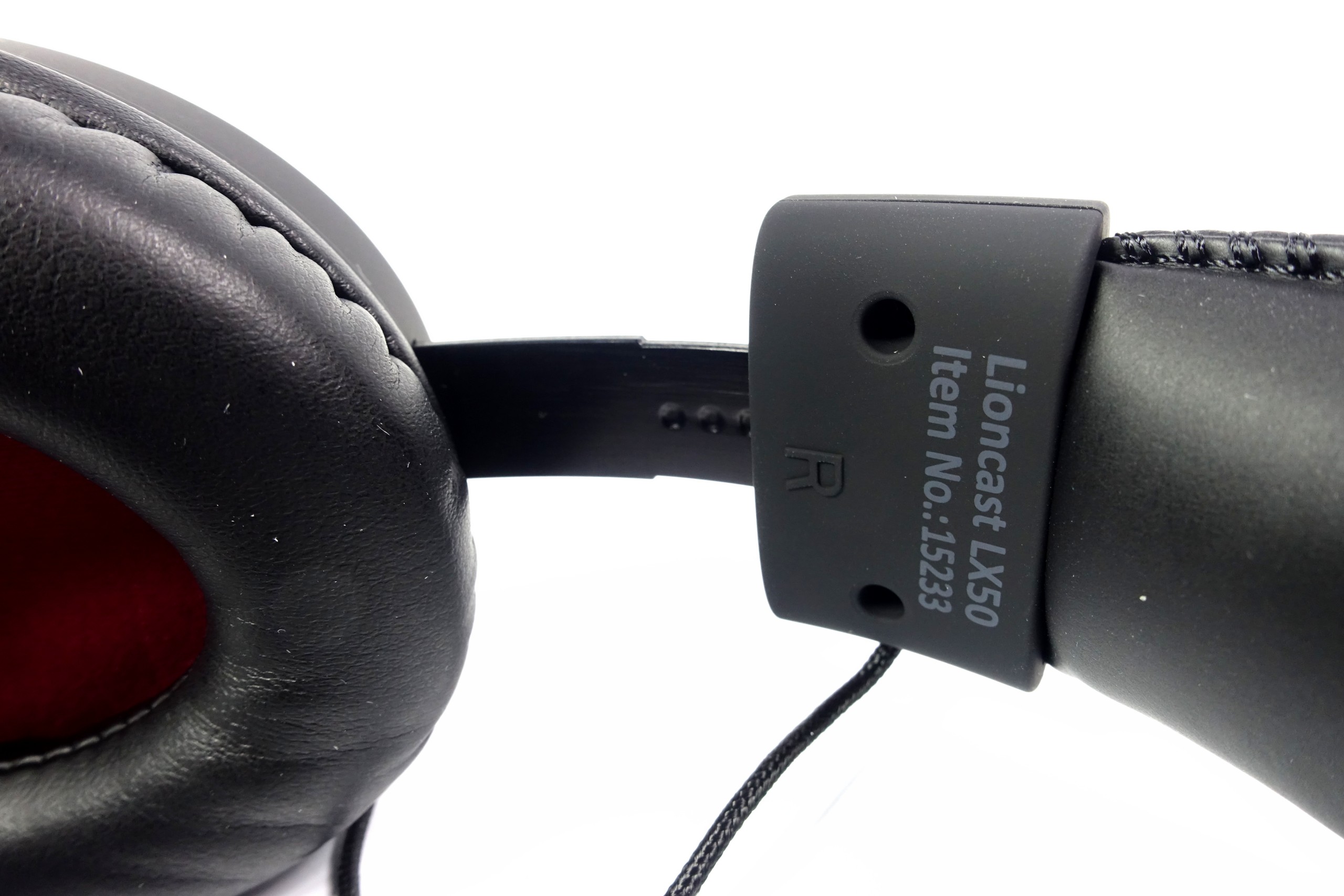 |
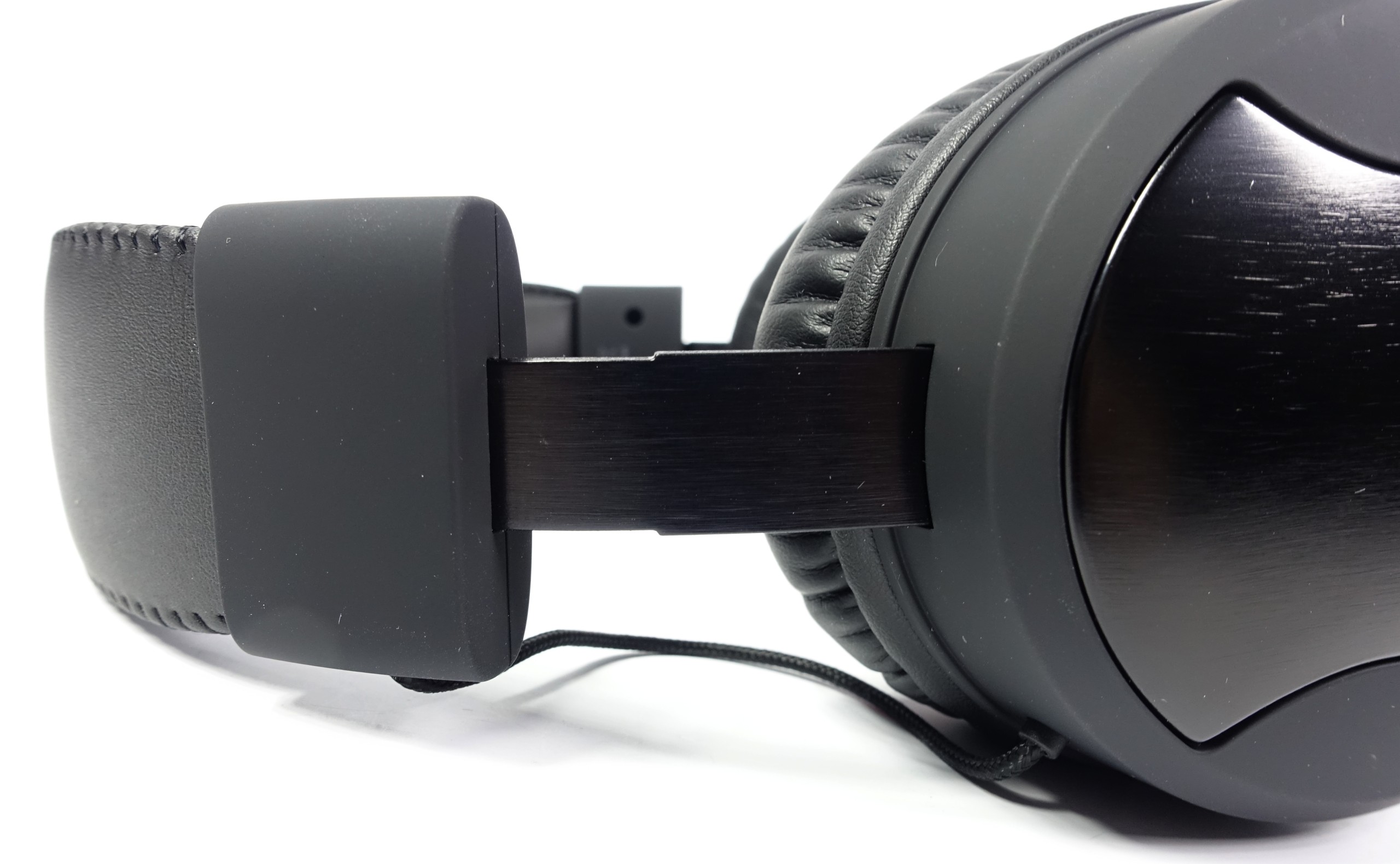 |
There are no joints on which our subject could swirl around, but only the headband and the spring steel, which is supposed to guarantee the adjustments. That works in the beginning, but not with really big heads.
The inner padding in the headband is good and completely sufficient, but the two ear plsters could be a little easier to replace. Unfortunately, as with some other headphones, the counterpart also does not have any real "threading aid", so that one has to act here with patience and spit around the small recess, whose position one should memorize better beforehand. As I said: Who stands on Grandma's plush…
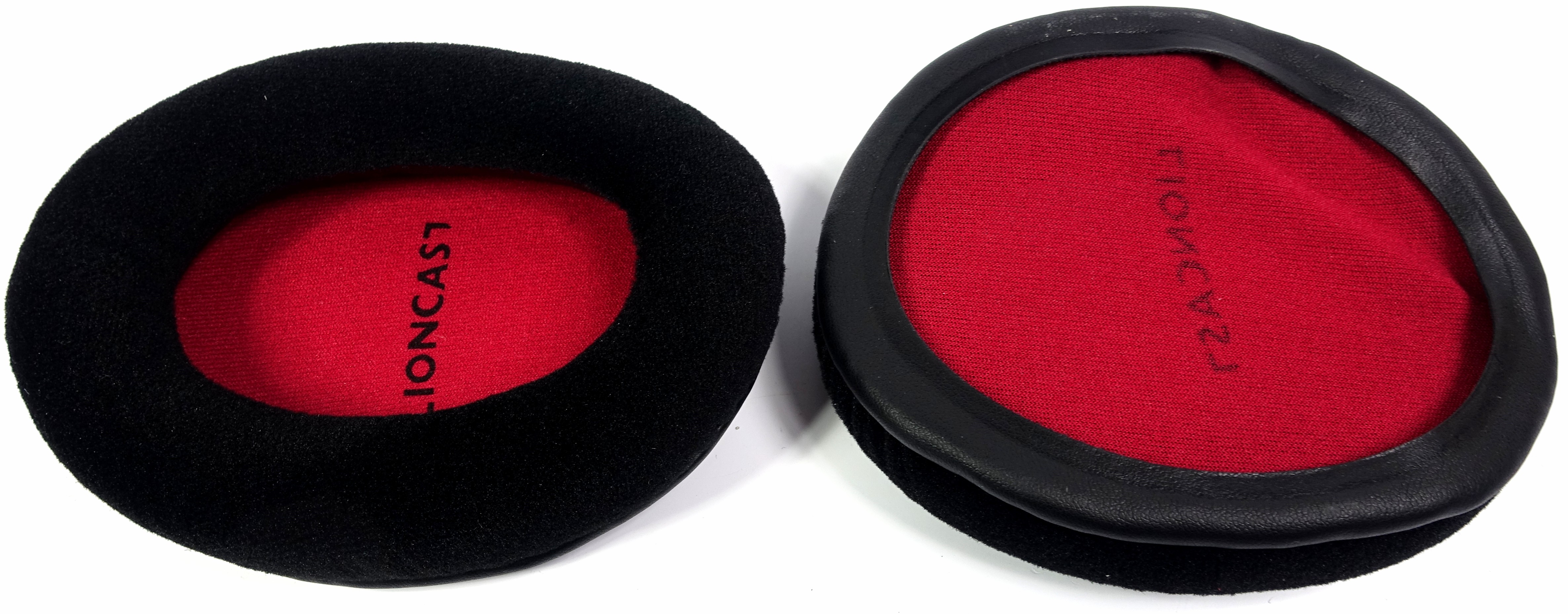
The sufficiently large ear pads make the headset a real over-ear model. The contact pressure is tolerable and the whole thing is also dense enough to leave the environment acceptable. The long-term carrying factor is sufficiently high, so brain pressure is unlikely to be obtained. However, eyewear wearers will take a little longer to find the optimal position for themselves.
Functionality and connection
The volume control is located in the cable and is standard in class. The built-in potentiometer does not scratch, but at the beginning has minor synchronisation problems at small levels.
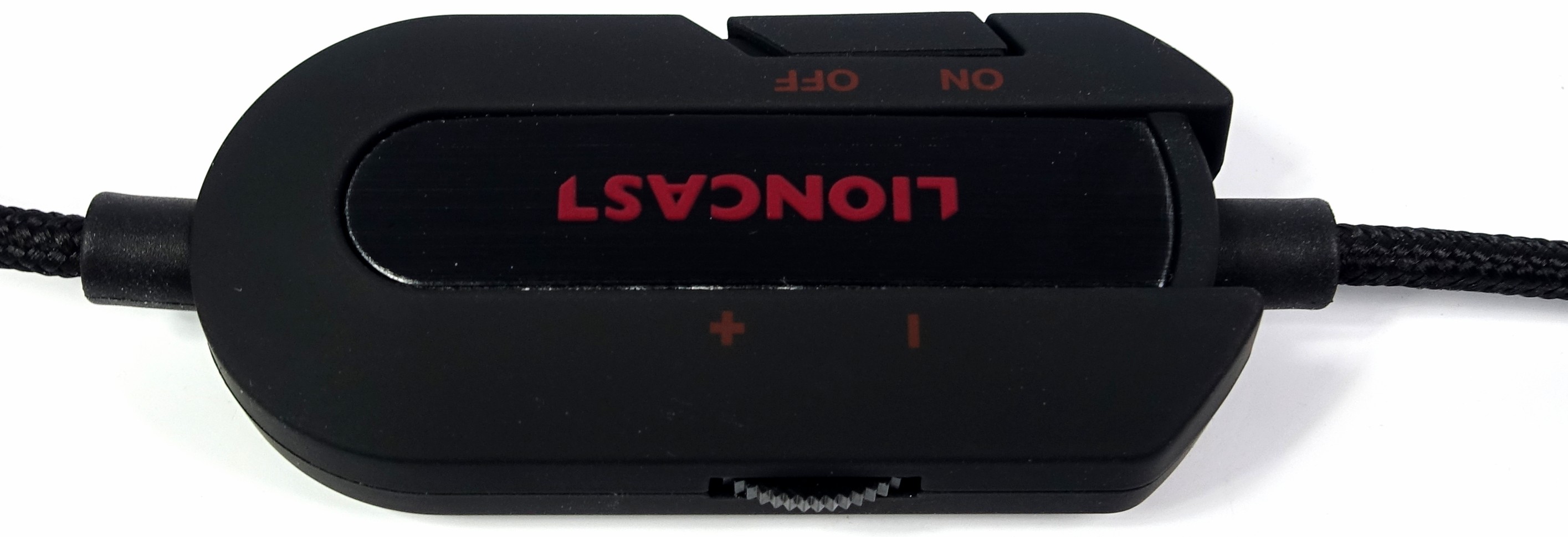
A grippy mute switch silences us for the other person. The whole thing can be operated intuitively and without any fuss, especially since the control box was not used too far away from the listener and cannot hide accidentally behind the player's possible beer, cola or pizza belly.
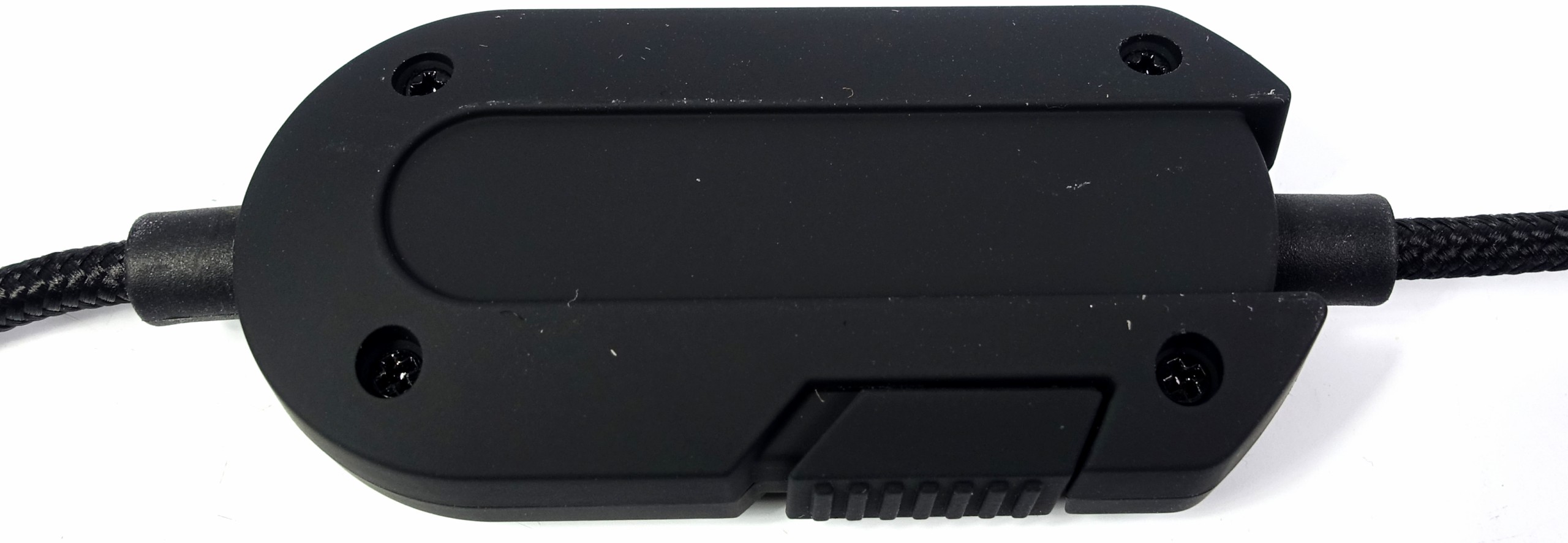
Inner life and own sounding
The interior is tidy, the solder quality acceptable. The strain relief of the cable is also solved by means of a node simple but effective. Otherwise we see the neat attachment of the handle by means of two screws (picture below, left). The internal volume is not too large – but that doesn't bother if the drivers have been well tuned.
With the Lioncast LX50, this tuning is fairly easy to solve and just as easy to modify. However, we would like to make it clear once again that the guarantee may expire in such interventions.
Now let's look at the two sides of the carrier plate for the 5 cm driver (53 mm outer diameter), which was not simply glued open. Instead, it was pressed into the front with a small plastic shell on the back, which also contains holes that will be discussed in the near end.
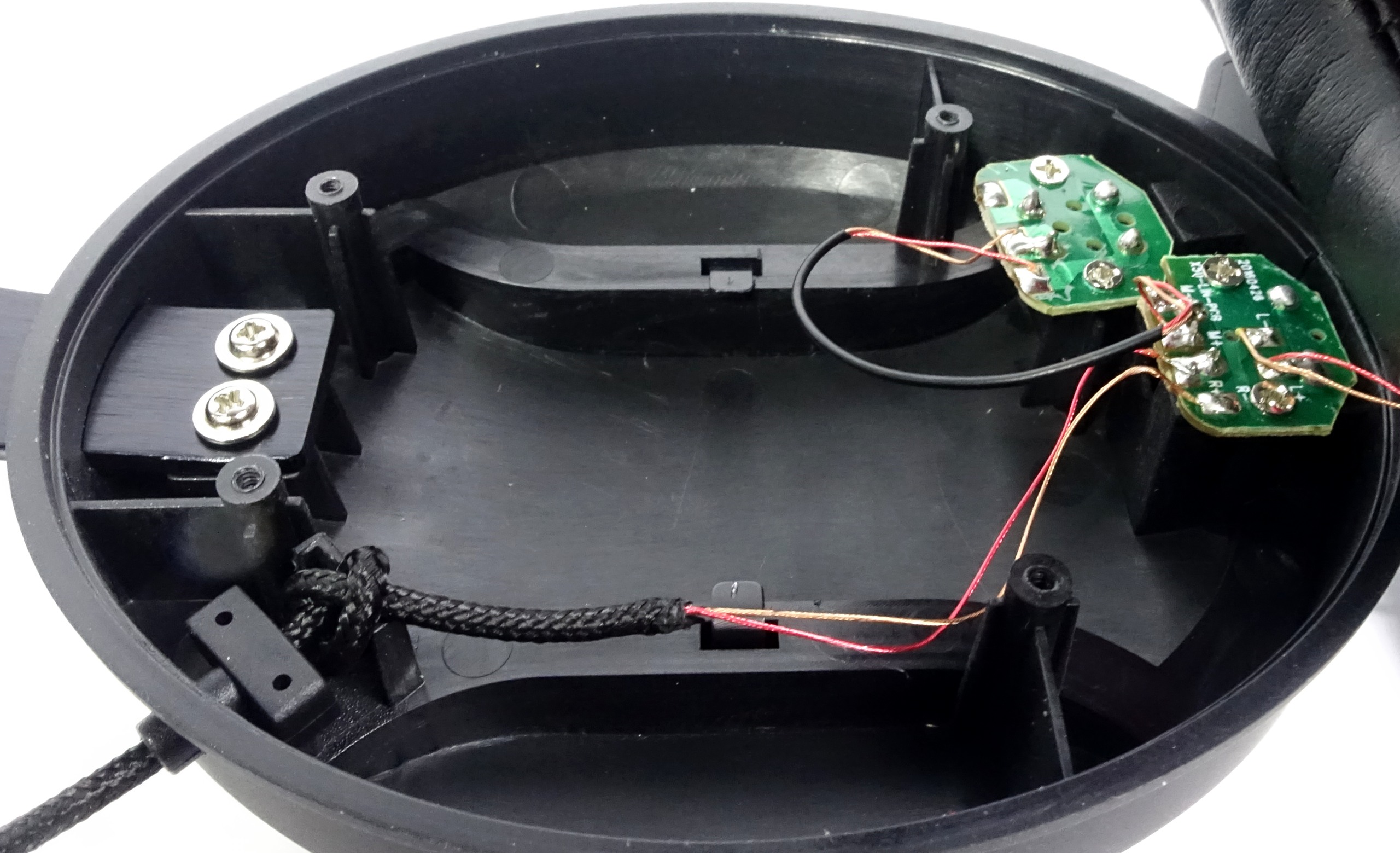
We first see on the left picture (below) that in addition to the continuous membrane cover (slightly softened super high tone) from the outside two more rectangular felt strips each cover three small holes (right picture, each sideways outside the Speaker).
This dampens the low tone a bit, but also avoids annoying resonances. If you can use an equalizer, you should not change this first and instead set an experimental level at 32 and 64 Hz (up to 6 dB).
The upper bass and lower middles were slightly dampened by glued some white fleece behind the membrane to cover some of the larger holes (pictured bottom right). Here you can play something and remove the damping completely. If you want, you can instead dampen the body of the earcup behind it with a thin foam layer or some felt. Then you can also remove the front-side bass damping completely on a trial basis.
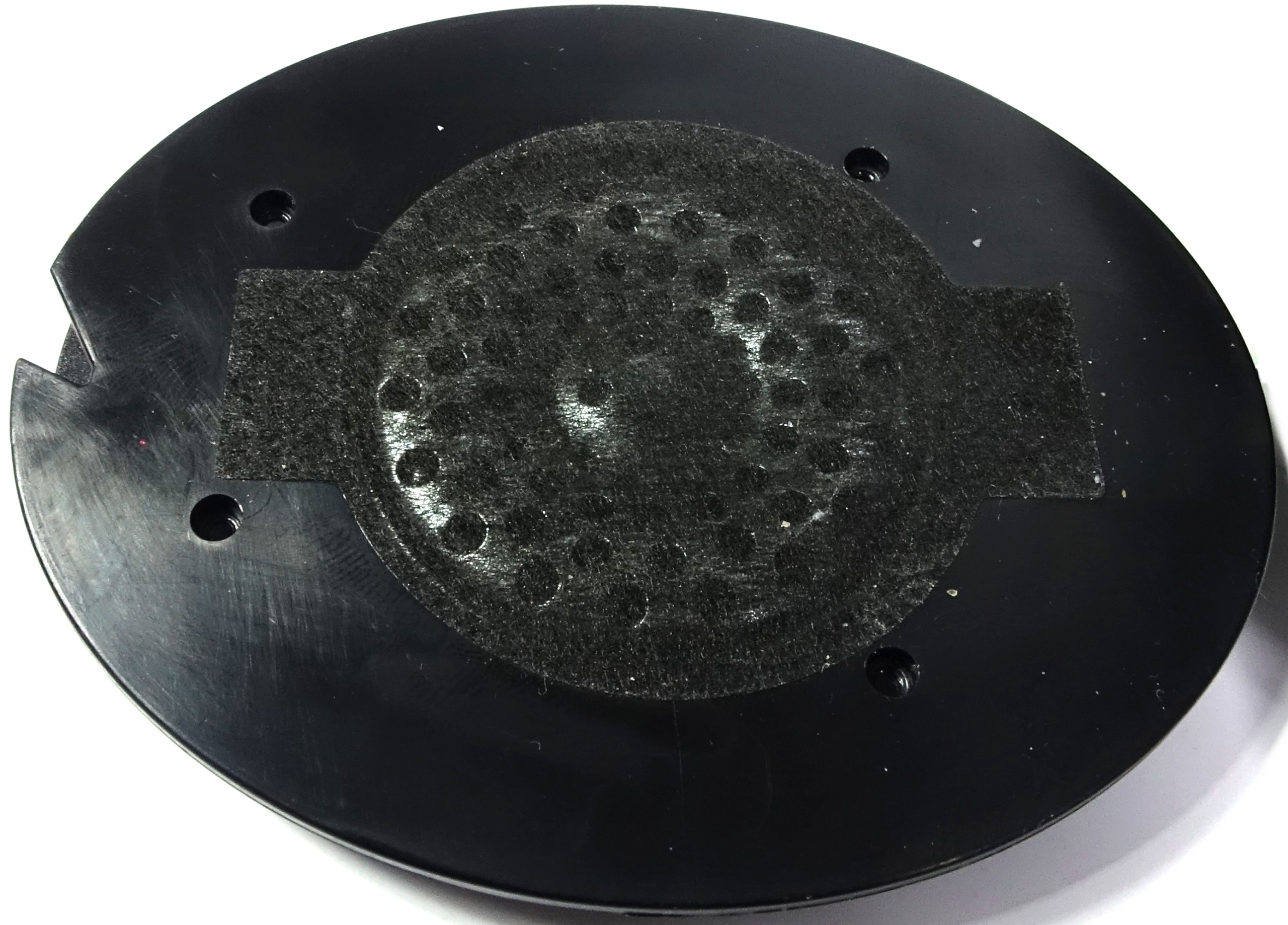 |
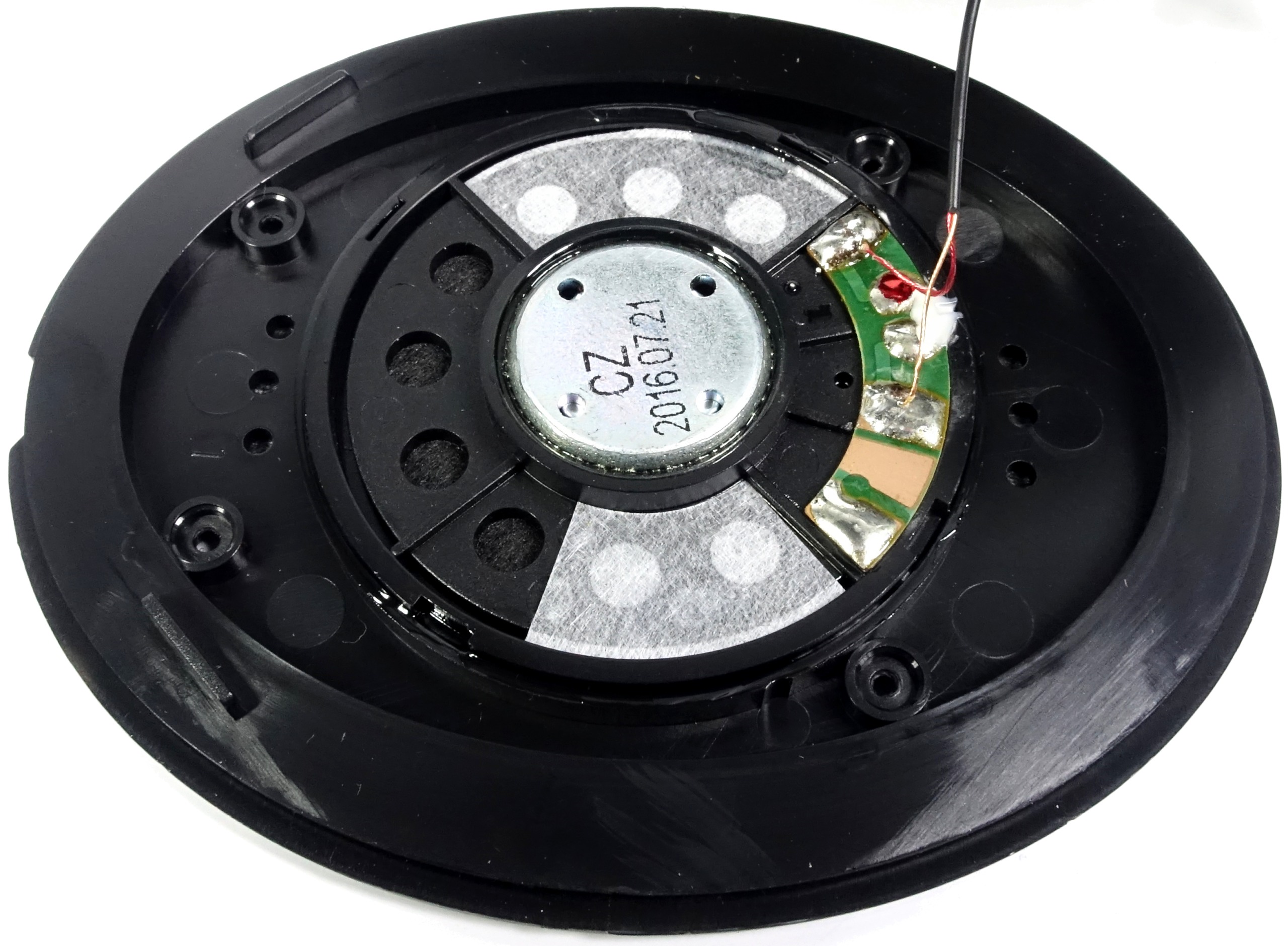 |
If you think you can really perceive sounds even at 16 KHz (and higher), you can also try the front-facing membrane cover. But beware of the Sibilants, because the character becomes a little more metallic and pointed!
Microphone
The microphone with ball characteristics sits on a pluggable gooseneck and does exactly what it is supposed to do. The pop protection is a real splash protection, but hardly influences the sound. The small electret microphone is sufficiently loud and also offers good speech intelligibility. Noise-cancelling is not found, but the environment voluntarily takes its sounds into the background with a well-aligned microphone.

Measurements and sound check
The measuring curve surprised us a bit, because instead of the usual "gamer-typical" bass load, an almost neutral reproduction awaited us, which is a bit hiberistic from the upper middle, but still comes along stimulatingly unexcited. Everything from the middle down is then what would be called "Schmalreh" in certain circles. Smooth, slightly sloping curves and no outpouring basin a la Kim Something.
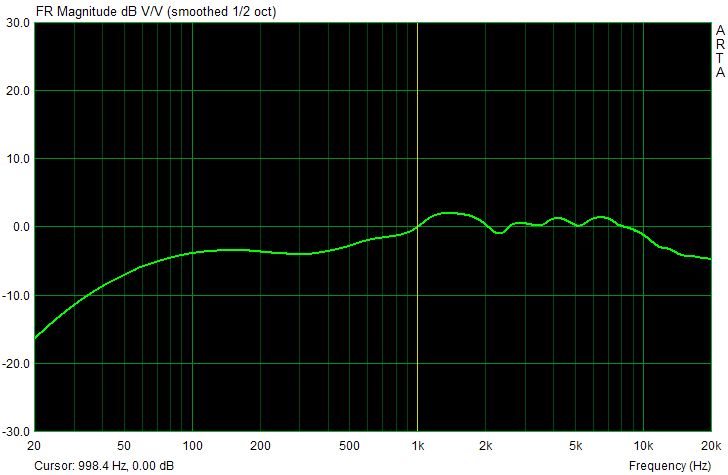
Now it is not the case that the bass would be completely missing; it's going quite well. Just not as a massive foundation under five monstrous basement slowers, but rather as a solid pillar foundation that stands securely without needing a lot of volume. If you help with the equalizer a little bit, you can still let in enough pressure without the membrane failing or quisiding with an early distortion. The things are level-proof, and they must be enviousofed to do so.
The very balanced curve up to the middles is far from any acoustic bathtub baroque, which we then liked even better than the whimpering roar of the usual suspects. Note: Loud is not automatically deep and greasy basses are the plague. The responsiveness and the resolution are in any case a real equivalent for this price.
The basic tones of the vocals and almost all instruments are still well pronounced and present despite the slight level reduction, but the headset sounds a bit hard and cool without any tutoring via equalizer and/or manual sounding. You can even like that, because it's definitely not detrimental to the orientation when you play. The location is good to very good, which is also due to the fact that the range between one and about four kilohertz hardly beats caprioles.
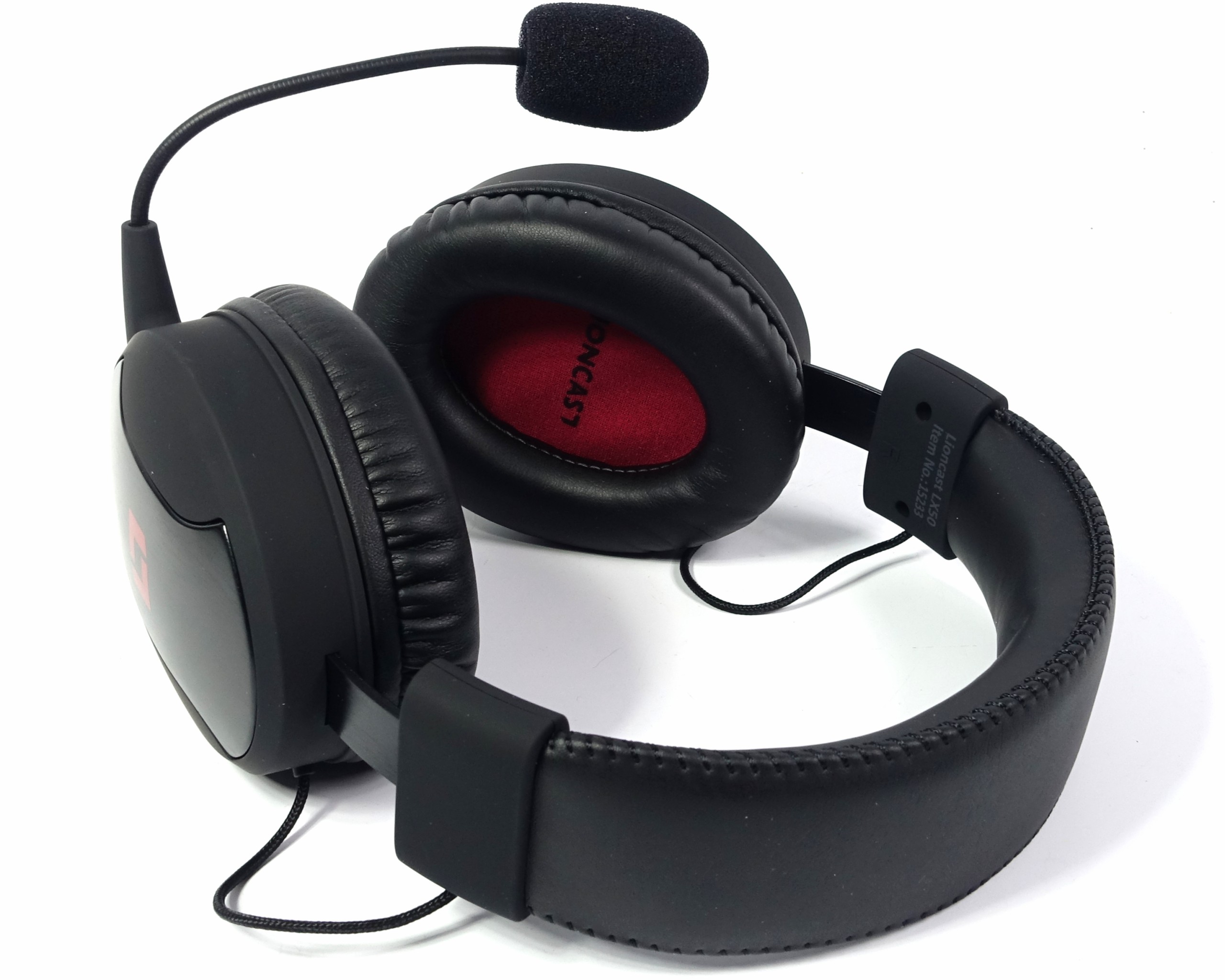
We also found it very pleasant that the area around eight kilohertz was not artificially inflated. This leaves the Sibilants at around six KHz where they belong – and it sounds dust-dry and a little cool, but also not completely metallic pointed and cold.
By the way, the part is also very suitable for music, especially since good levels can be reached here as well and the stage is definitely not a bad one. One could have simply shown a little more courage to bare meat at the sound below, without crashing into the bass-jauchegrube on both leg and padding the tonal butt pointlessly with own fat.
Conclusion
We also see the Heaset in perspective rather well above the 50 euro limit, although the street price, which is just under 59 euros current, is not a bargain, but somehow somewhat realistic.
For an initial test with a new OEM, the result is visually, tactile, acoustic and qualitatively a small surprise.
Instead of thoughtlessly reaching into the OEM shelf and rebranding bland, Lioncast has already put some effort into not getting started with a mainstream headset that can't even be on the table with a superfluous sounding system.
One should simply reward the courage of the supposed niche – and we do so with our award, which we actually only award in headsets if we really see our self-imposed commitment to (acoustic) neutrality fulfilled.
There is already enough load-new electronic scrap for the ears, but the LX50 is definitely not one of them.
Technical data and availability
Finally, let us summarize the technical data in a table. The headset has only recently been on the market, so the price has not yet moved significantly down compared to the EIA.
- 1 - Einführung und Übersicht
- 2 - Arctic P533 Penta
- 3 - Cougar Immersa
- 4 - Creative Flex
- 5 - Creative Sound Blaster Inferno
- 6 - Creative Sound Blaster Tactic3D Rage Wireless V 2.0
- 7 - Creative Sound BlasterX H5
- 8 - [NEU] Lioncast LX50
- 9 - Logitech G230
- 10 - Ozone Ekho H80
- 11 - Qpad QH-90
- 12 - Razer ManO'War Wireless
- 13 - Roccat Renga
- 14 - Sharkoon Skiller SGH1
- 15 - Steelseries Siberia 200
- 16 - Steelseries Siberia 800

































Kommentieren